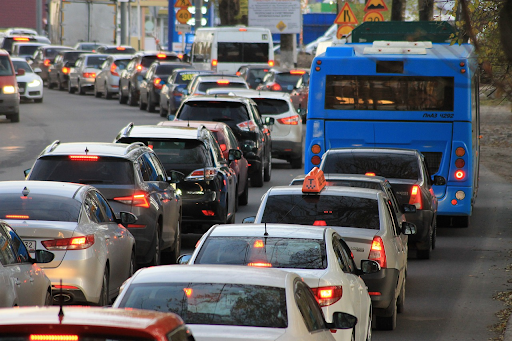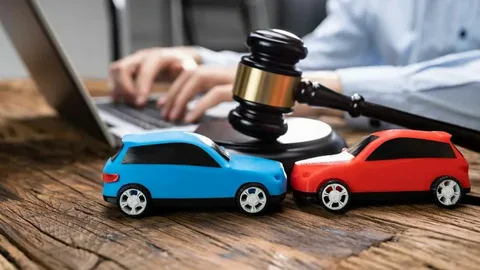New Jersey is well-known for its thriving cities, stunning coastlines, and, regrettably, congested traffic. It’s not unexpected that there is a lot of stop-and-go traffic given the number of automobiles on the road, especially during peak hours.
This causes significant safety issues and delays our everyday trips. Recent surveys and data have demonstrated a strong correlation between the state’s increased rate of traffic accidents and traffic congestion.
We’ll learn more about this subject when we explore how New Jersey’s congested highways contribute to these terrible incidents. It’s critical that both drivers and decision-makers are aware of this problem and work to make all roadways safer.
The Nexus Between Traffic Congestion and Road Accidents
New Jersey sees a lot of cars on the road every day, making some areas highly congested, especially during rush hours. With more cars come more chances for things to go wrong. Statistics show that when roads are packed, the number of road accidents goes up. One might ask why.
A significant reason is how New Jersey’s roads are built and how many people live there.
Some roads are narrow or have many turns, making it challenging for drivers to navigate, especially when it’s crowded. Moreover, with many people living close together in New Jersey, there are naturally more cars on the road.
This combination of road design and the number of vehicles can lead to more accidents. Safety is always a priority, and understanding these factors is a step towards making our roads safer.
Reasons Traffic Congestion Contributes to Accidents in NJ a. Driver Frustration and Aggressive Driving
a. Driver Frustration and Aggressive Driving
Imagine being stuck in a long line of cars, with no movement for what seems like hours. It’s frustrating, right? This frustration can make drivers impatient and more likely to drive aggressively. Aggressive driving behaviors, like speeding or not yielding to others, increase the risk of accidents.
Moreover, emotions can sometimes take over, leading to incidents of road rage, where drivers act out of anger, leading to dangerous situations on the road.
b. Frequent Lane Changes
In a bid to move ahead, some drivers constantly switch lanes, thinking it might be faster. But these frequent lane changes, especially without proper signaling, can be risky. Other drivers might not expect a car to suddenly enter their lane, and this can result in collisions.
c. Tailgating and Reduced Reaction Time
Being too close to the car in front is known as tailgating. When drivers tailgate, they don’t leave enough space to stop safely if the car ahead brakes suddenly. Because of the limited space, drivers have less time to react, increasing the likelihood of rear-end collisions.
d. Limited Visibility
When roads are packed with vehicles, it becomes harder to see everything around you. A driver’s view can be blocked by larger vehicles, making it difficult to see traffic signs or other cars’ signals. This limited visibility means drivers might miss crucial information, leading to potential accidents.
e. Distracted Driving
Sometimes, when traffic is slow, drivers feel it’s okay to check their phones or adjust their radio. But even a few seconds of distraction can be dangerous. In New Jersey, there have been cases where drivers, thinking they had time because of slow traffic, looked away from the road, only to end up in an accident.
All these factors highlight the challenges of driving in congested areas in New Jersey. Being aware of these issues and driving cautiously can make a significant difference in road safety.

Comparative Analysis: NJ Vs. Other States
Every state in the U.S. has its unique challenges when it comes to traffic. While many states deal with congestion, New Jersey (NJ) has some specific factors that set it apart. One of the most notable aspects is NJ’s road designs. Some of the roads in NJ are older and were constructed before modern traffic patterns emerged.
This means they might not be as efficient in handling the current flow of vehicles.
Furthermore, New Jersey’s location between major cities like New York and Philadelphia means it has a lot of vehicles passing through, contributing to the heavy traffic. Not every state has such significant cities at its borders, leading to constant in-and-out traffic.
The Role of Infrastructure and Planning
The design of a city and its roads plays a crucial role in how traffic flows. Proper urban planning can help reduce traffic congestion and, in turn, decrease the number of accidents. For instance, creating more lanes, building overpasses, or designing efficient intersections can make traffic smoother.
New Jersey is aware of its traffic challenges. There are ongoing projects aimed at improving the roads and traffic conditions. Some of these include expanding highways, updating old roads, and even implementing modern traffic management systems to monitor and control traffic flow better.
The goal of these projects is not just to make commutes faster but also safer for everyone on the road.
By addressing the infrastructure and planning needs, NJ hopes to set a benchmark for other states in managing and improving traffic conditions, ensuring the safety of its residents and those passing through
Safety Tips for Navigating Through Congested Traffic:
- Defensive Driving Techniques: Always stay alert and anticipate possible challenges. Being prepared allows for safer reactions to unexpected events on the road.
- Maintain a Safe Following Distance: Ensure there’s enough space between your car and the one in front. This distance gives you time to react if needed and offers a better view of the road ahead.
- Leverage Technology: Use traffic apps to receive real-time updates. These tools can alert you to congestion and suggest alternate routes.
- Stay Calm: Avoid aggressive driving. Being patient and calm, even in slow-moving traffic, helps in making wiser decisions, and ensuring everyone’s safety
Seeking Expertise Following Traffic Accidents
In the aftermath of a road accident, especially in congested areas, understanding your rights and the complexities of the law is vital. A personal injury lawyer specializes in assisting individuals navigate these situations. They offer guidance on potential compensations, handle necessary paperwork, and represent victims in legal settings.
If you ever find yourself in an unfortunate incident on New Jersey’s congested roads, seeking the counsel of an experienced personal injury lawyer can make the process smoother and ensure your rights are well-protected.
Their expertise is invaluable in deciphering the intricate legal maze that often accompanies traffic accidents.
FAQS
What are the main causes of road accidents in congested traffic in NJ?
Main causes include aggressive driving, frequent lane changes, tailgating, limited visibility, and distracted driving.
How does NJ’s traffic congestion compare to other states?
NJ faces unique challenges due to its older road designs and its location between major cities.
Can technology help in navigating through NJ’s congested roads?
Yes, using traffic apps can provide real-time updates and suggest alternate routes.
What is defensive driving?
Defensive driving means staying alert, anticipating road challenges, and being prepared to react safely.
Are there ongoing efforts to improve NJ’s traffic conditions?
Yes, projects like road expansions and traffic management systems are in progress to enhance road safety and flow.
Conclusion
Traffic congestion in New Jersey is a severe safety issue that causes more than simply delays on the road. It is obvious that jammed traffic can result in accidents, from the difficulties of negotiating clogged roads to the dangers associated with aggravated drivers.
Drivers may navigate safely by driving defensively and using technology to keep informed. However, it doesn’t only affect drivers. The significance of enhancing our infrastructure and roadways must be acknowledged by policymakers.
Let’s all do our share as we advance. Be cautious and aware, drivers. Let’s get the ball rolling on safer roads in New Jersey, legislators. The security of everyone depends on it.





